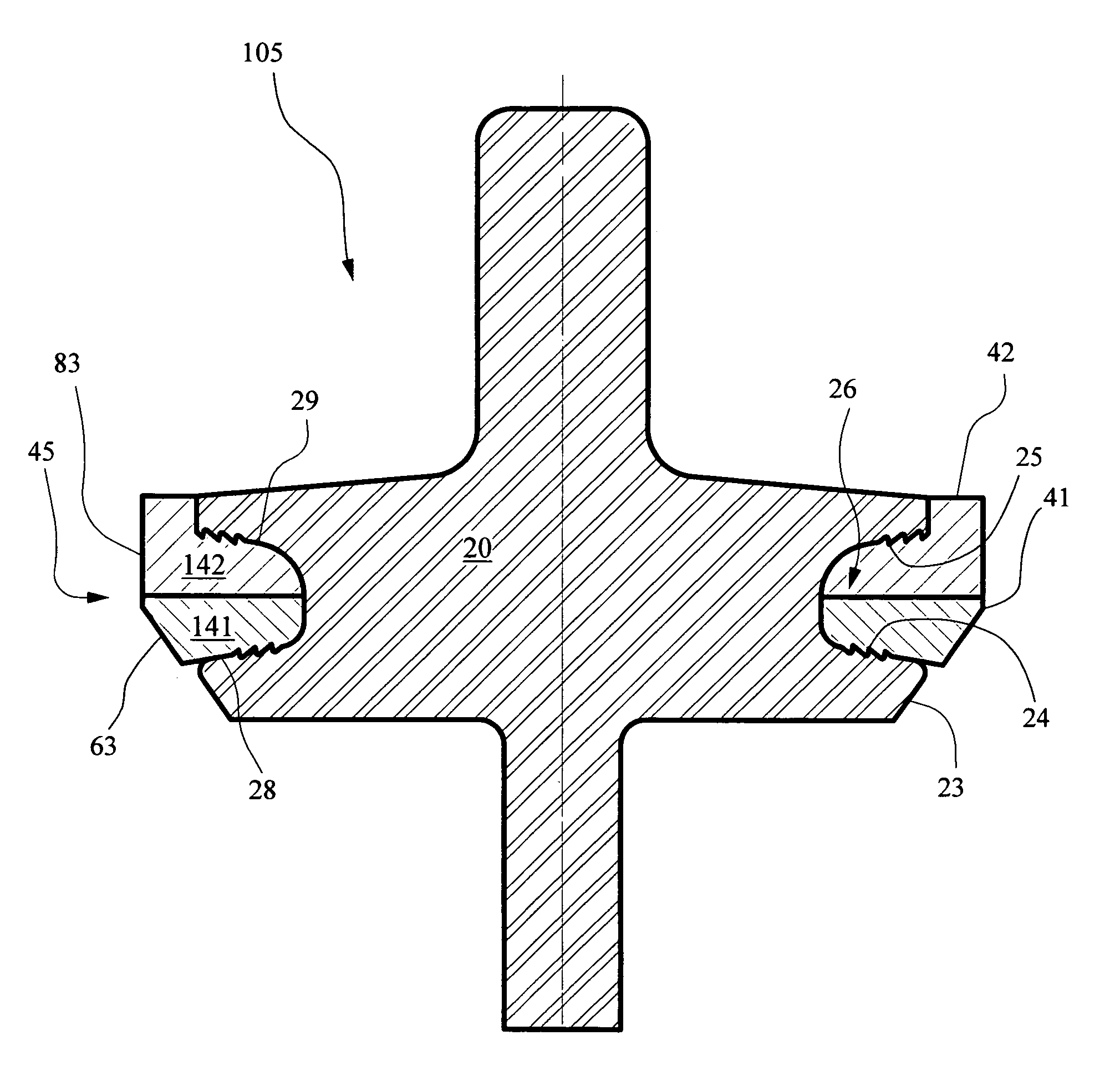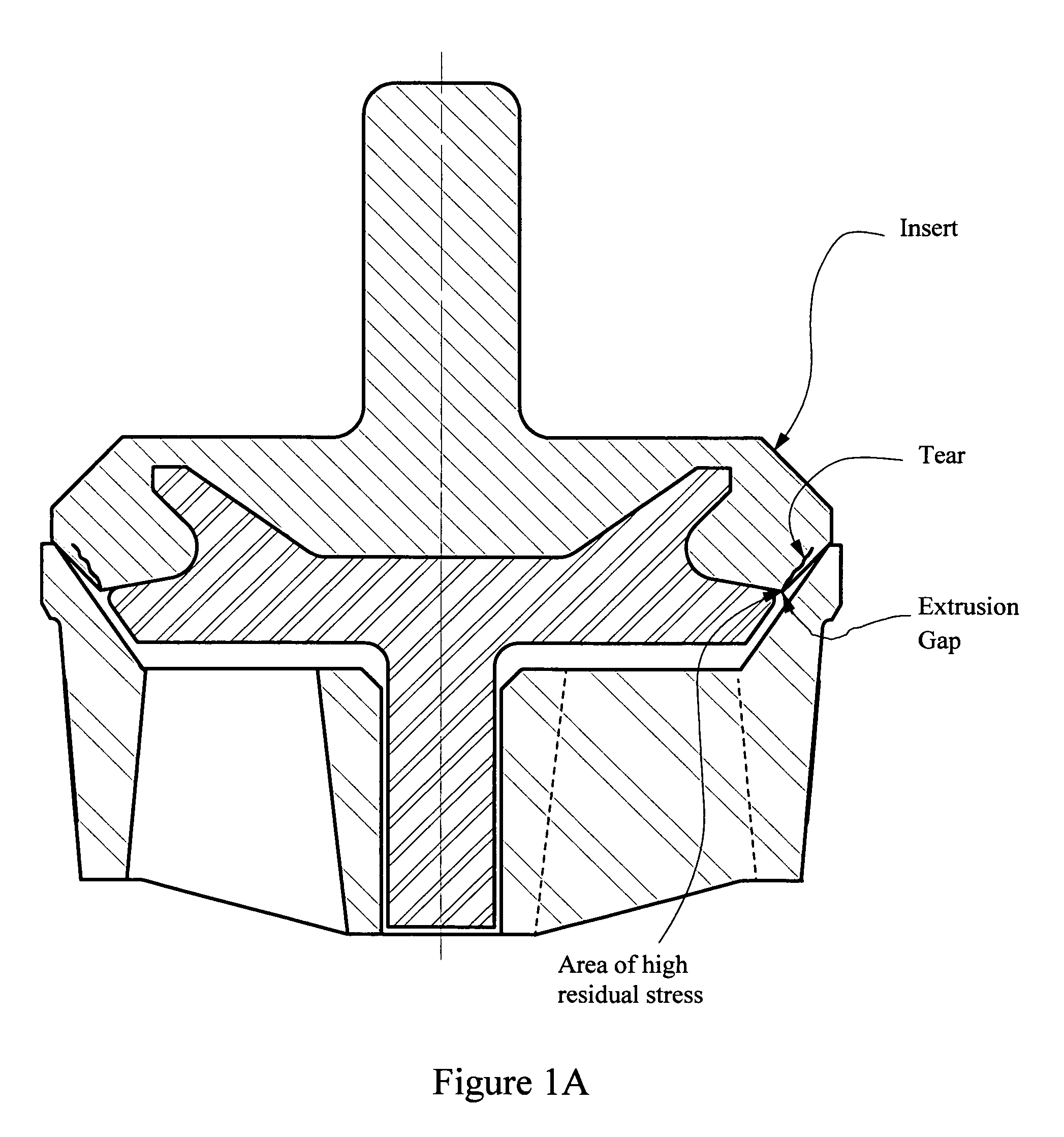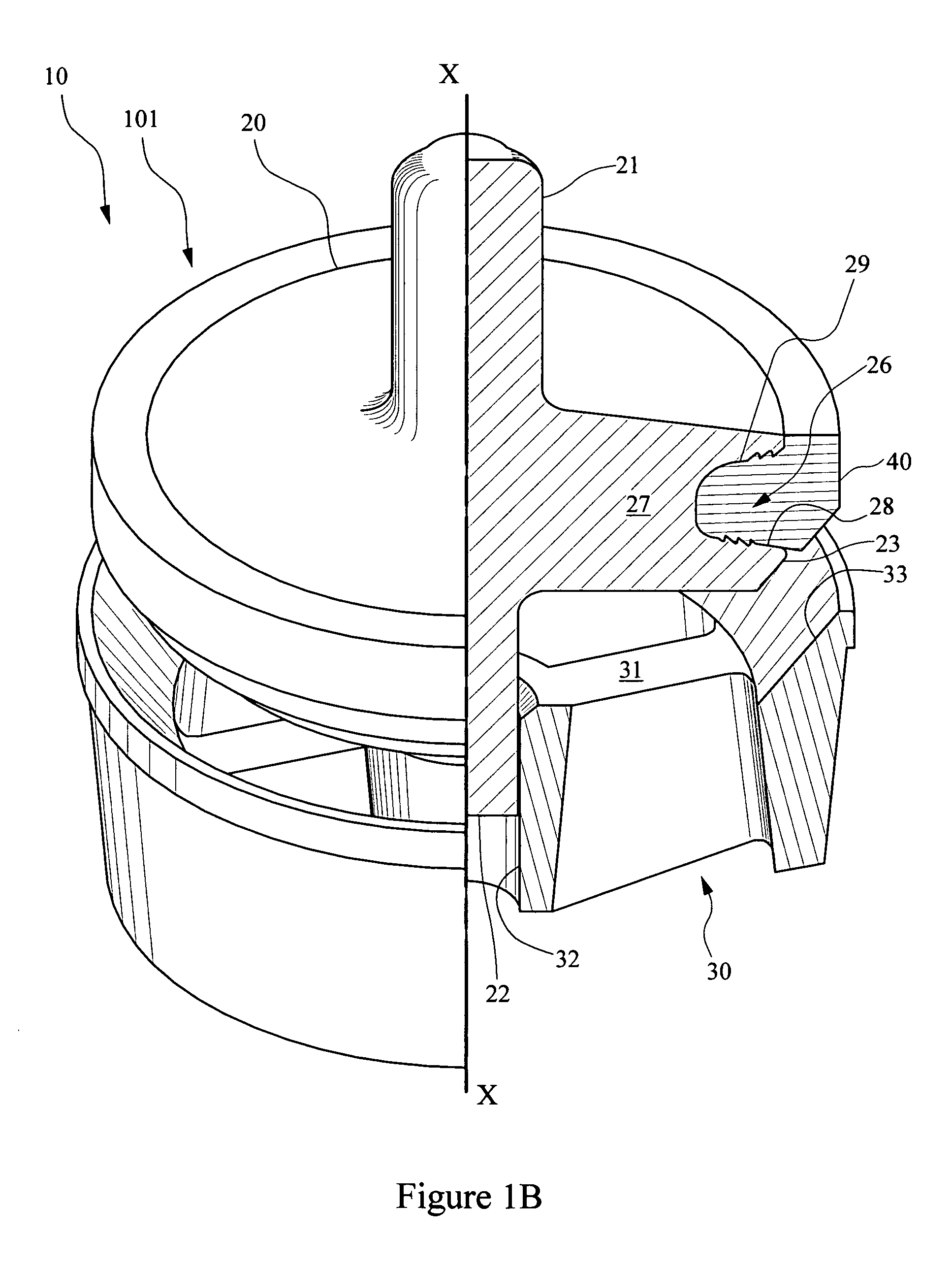Valve body and seal assembly
a valve body and seal technology, applied in the field of valves, can solve the problems of historically involved added costs, difficult or impossible to achieve, and manufacture of valve elements with interdigitated cast-in-place seals, so as to reduce stress concentration, reduce stress concentration, and minimize the detrimental stress-raising effect of serrations
- Summary
- Abstract
- Description
- Claims
- Application Information
AI Technical Summary
Benefits of technology
Problems solved by technology
Method used
Image
Examples
Embodiment Construction
[0046]FIG. 1A indicates typical areas of high elastomer stress and associated premature seal failure expected in bonded seals on valve bodies like that in FIG. 2 of the '995 patent. Note that the '995 patent does not discuss seal failure due to high elastomer stress at all. On the contrary, by describing increased overall valve element integrity associated with the bonding of valve seal inserts to a valve body, the '995 patent teaches away from the adhesion-inhibiting structures and functions of the present invention.
[0047]In so teaching, the '995 patent simply reinforces the past failure of valve manufacturers to appreciate the important effects of seal elastomer background stress on valve durability. Until the present invention, the problem of elevated background elastomer stress in bonded seals was neither recognized nor effectively addressed. Indeed, the problem was actually compounded by the widespread industry practices reflected in the teachings of the '995 patent.
[0048]In co...
PUM
 Login to View More
Login to View More Abstract
Description
Claims
Application Information
 Login to View More
Login to View More - R&D
- Intellectual Property
- Life Sciences
- Materials
- Tech Scout
- Unparalleled Data Quality
- Higher Quality Content
- 60% Fewer Hallucinations
Browse by: Latest US Patents, China's latest patents, Technical Efficacy Thesaurus, Application Domain, Technology Topic, Popular Technical Reports.
© 2025 PatSnap. All rights reserved.Legal|Privacy policy|Modern Slavery Act Transparency Statement|Sitemap|About US| Contact US: help@patsnap.com



